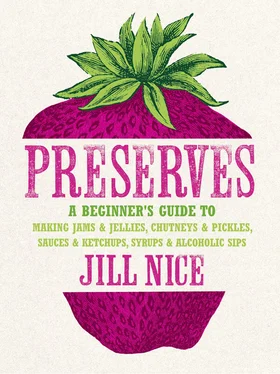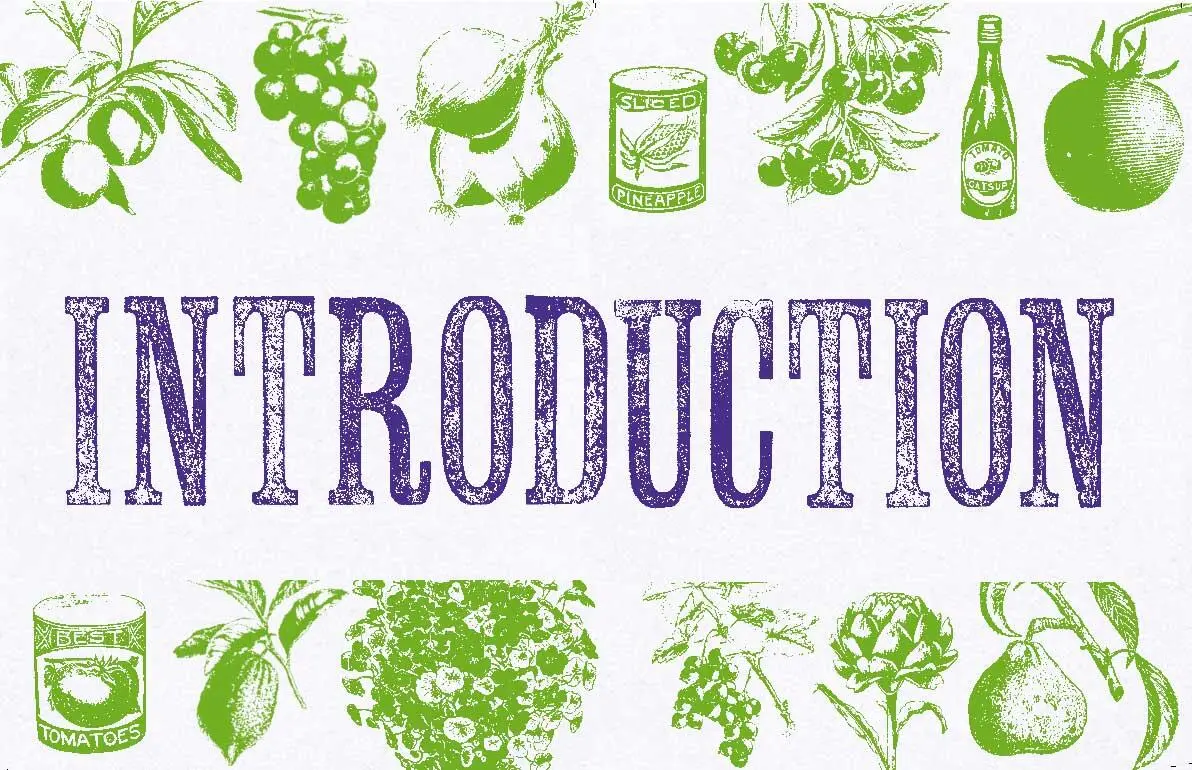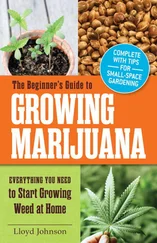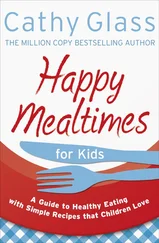A Beginner’s Guide to Making Jams & Jellies, Chutneys & Pickles, Sauces & Ketchups, Syrups & Alcoholic Sips

For my willing ‘tasters’: David, Ben, Lotte, Lucy,
Steve, Vivien, Nick, Jessie, Ols and the B.B.
Cover
Title Page
Dedication
Introduction
Vegetables
Fruit
Herbs
Acknowledgements
Copyright
About the Publisher
Preserving is an ancient method of extending the keeping qualities of a wide variety of ingredients. Traditionally used to make the most of a glut of seasonal produce, it is still very popular today and potting up and preserving delicious surplus foods has become a creative, worthwhile and sometimes even profitable hobby.
Preserving has a considerably different motivation nowadays than in the past, when the desire to put food by, whilst it was available in quantity, was a driving force and could literally mean the difference between life and death. Today, our desire to preserve food is to provide better choices for our families, to ensure the food we eat is pure, wholesome and unadulterated, to make the best possible use of local and freshly grown produce and to make the most of the best available ingredients. There is also, of course, the undoubted facts that your own preserves will taste superior and give you much more value for money than if you opt for the shop-bought variety.
I often hear people say how they think making jam is so time-consuming, so here I’ve made the quantities easily manageable and the methods as simple as possible. There is no longer the need to pot up tons of fruit and vegetables to see us through the bleak months of winter – the availability of produce throughout the year and the ability to store food in fridges and freezers has changed all that.
Making your own preserves has become more a desire to experiment and produce the unusual and different, to offer up exciting choices for the table and to make exotic presents for your friends and family – who could resist homemade Peaches in Brandy Wine or Cranberry and Kumquat Pickle? There is also the possibility of all the wonderful tarts, pies and puddings filled with your own creations, those mouthwatering mixtures of apples, pears and plums; rhubarb jam, preserves of gooseberry and apricot with names redolent of the countryside – September Jam, High Derry Down Conserve and Blackberry and Raspberry Jelly.
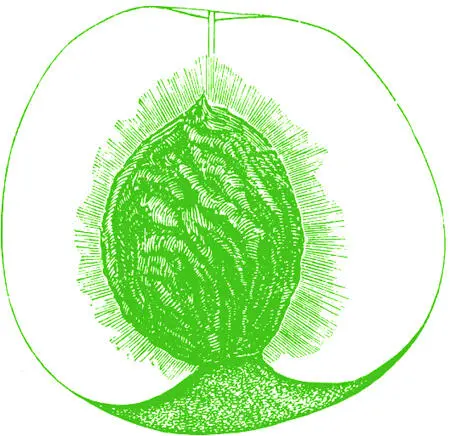

The cold table has never looked so appetising either – jars of pickled and spiced fruits and vegetables add sparkle to a platter of cold meats and salads. Rich and flavourful chutneys boost homemade crusty bread with a good cheese; spicy sauces and jellies complement tasty pâtés or pies, to say nothing of perking up a plate of bangers and mash.
Preserving all this natural bounty brings out the most ancient of our squirrelling instincts, to put by today what we may not have tomorrow. However, unlike the squirrel, we do not have to search for our hidden bounty beneath a tree, but can gaze upon shelves of glowing and colourful pots and feel eminently pleased with ourselves and the fruits of our labours.
THE DIFFERENT TYPES OF PRESERVES
So, you’ve decided on the main ingredient, but what should you make? And just what is the difference between a jam and a conserve or a chutney and a pickle?
JAM
In its simplest form, jam is fruit boiled with sugar to prolong its keeping quality and prevent it from going mouldy. The effect of heat releases the pectin and acid, present to some degree in all fruit, which then combines with the sugar to form a set. Jam should be a relatively smooth amalgam of fruit and sugar, most usually used for spreading on bread, toast or cakes. In the United States, jam is often referred to as jelly or spread. Jams such as Greengage and Red Gooseberry or Green Tomato Jam with Limes are quite unique.
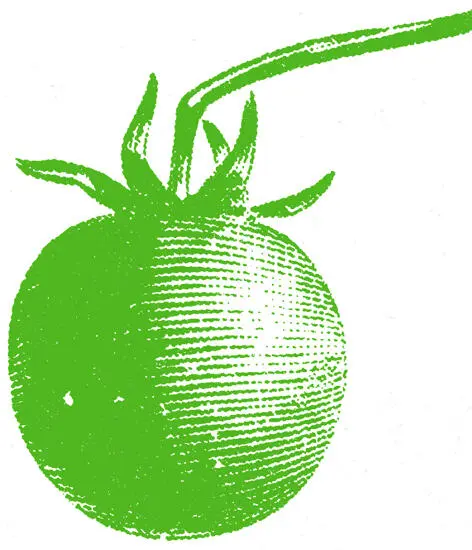
CONSERVES JAM
Also sometimes referred to simply as preserves, these are pieces of whole fruit suspended in a jellified syrup, for example Cassandra’s Gooseberry Conserve, the truly exotic Fresh Fig Preserve with Sherry or Strawberry Conserve. These are quite delicious and unique and are often eaten as a dessert with cream or used as a filling for sweet flans. Victoria Plum Conserve and Quince and Parsnip Preserve are also utterly delicious and can only be made by your own fair hand.
CURDS
These are usually made from citrus fruits, particularly lemon, in which the pulp, peel and juice are combined with eggs, sugar and butter to give a rich, thick mixture Old-Fashioned Lemon Curd recipe. Lemon curd is a wonderful treat, but without artificial preservatives it does not last well, so make a small quantity and keep it in the fridge. Other fruit, such as raspberries, gooseberries, apricots and peaches, can also be used by substituting 450g fresh fruit, puréed, for the lemon.
CHUTNEYS
A combination of fresh and dried fruit and/or vegetables, hot spices, herbs, sugar and vinegar mixed together to make a chunky mixture in which no flavour predominates. They can range from sweet and mild to ferociously spicy. Chutney should be soft and slightly runny when cooked – the mixture thickens and improves in flavour when kept. In India, the land of its origin, chutney was made with uncooked ingredients and brought to the table raw. Nowadays, it is more usual to set it aside to be eaten at a later date with cold meats and bread and cheese.
Chutney is an excellent way in which to use up gluts of fruit and veg, such as windfall apples, plums, marrows or green tomatoes, that are sometimes less than perfect and correspondingly cheaper or, if you’re really lucky, even free! Tomato Chutney or Hot Rhubarb Chutney make use of glut produce and last throughout the winter to make a good addition to sandwiches and salads.
RELISHES
Relishes are a soft amalgam of fruit and/or vegetables, such as Red Pepper Relish. These delicious goodies are not as long-lasting as chutneys, but they can be made reasonably quickly and are an extremely useful addition to the ubiquitous barbecue menu. Because they spread easily, they are also excellent in sandwiches. Make small pots or keep in the fridge once opened. Hamburgers and sausages will be perked up with the Celery and Tomato Relish or Chilli Relish.
PICKLES
There are three types of pickle. One in which the amount of vinegar used is proportionately lower than the quantity of fruit and sugar, therefore a spicy ‘set’ pickle is achieved. The second type is where fruit and vegetables are partly cooked in a spicy vinegar. The last variety of pickle is made by preparing vegetables in a salt or brine mixture and then packing them into jars of well seasoned vinegar or sauce, for example Pickled Onions or Hot and Spicy Pickled Red Cabbage. Homemade pickles are so much better than commercially produced pickles – no additives, no artificial preservatives – just a wholesome fresh flavour and you can have lots of fun experimenting and even more enjoyment out of the eating!
Читать дальше
